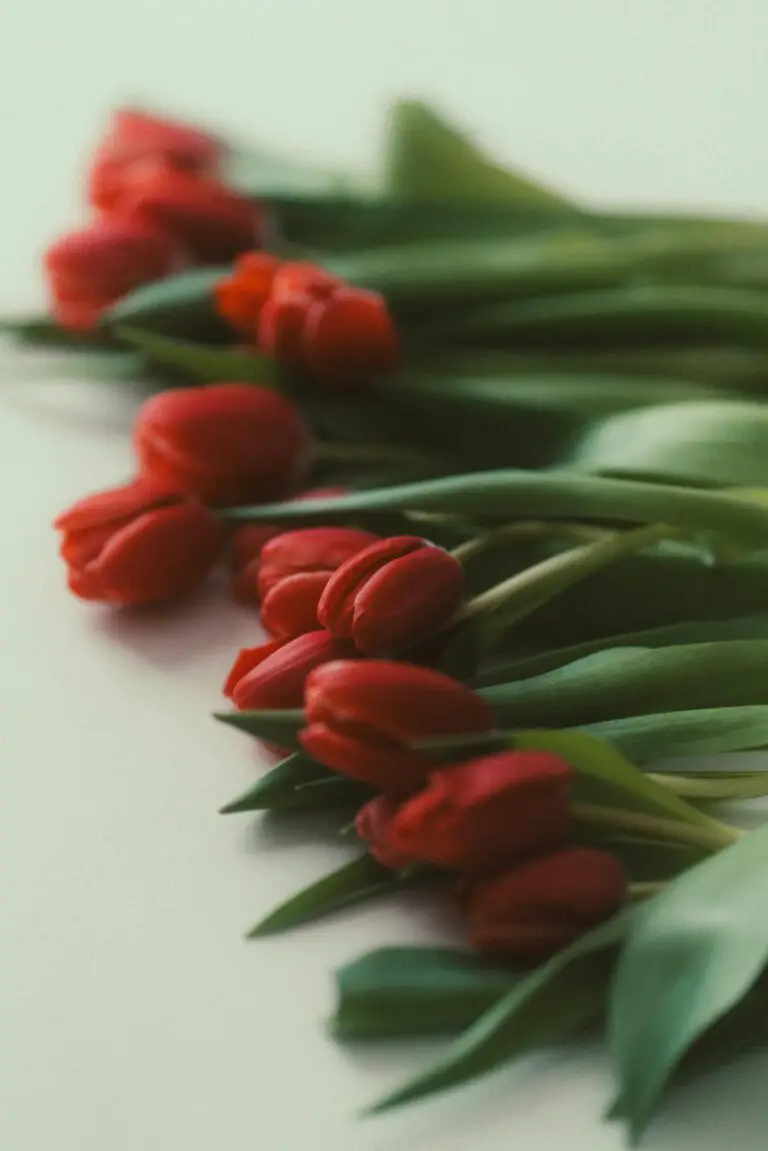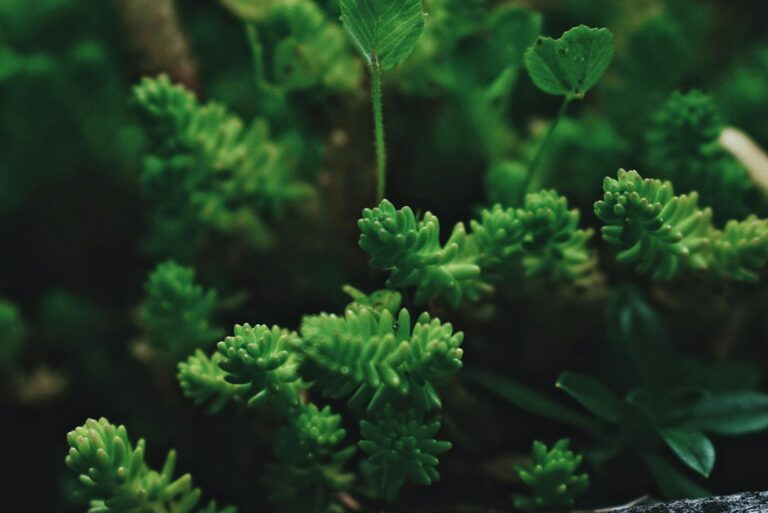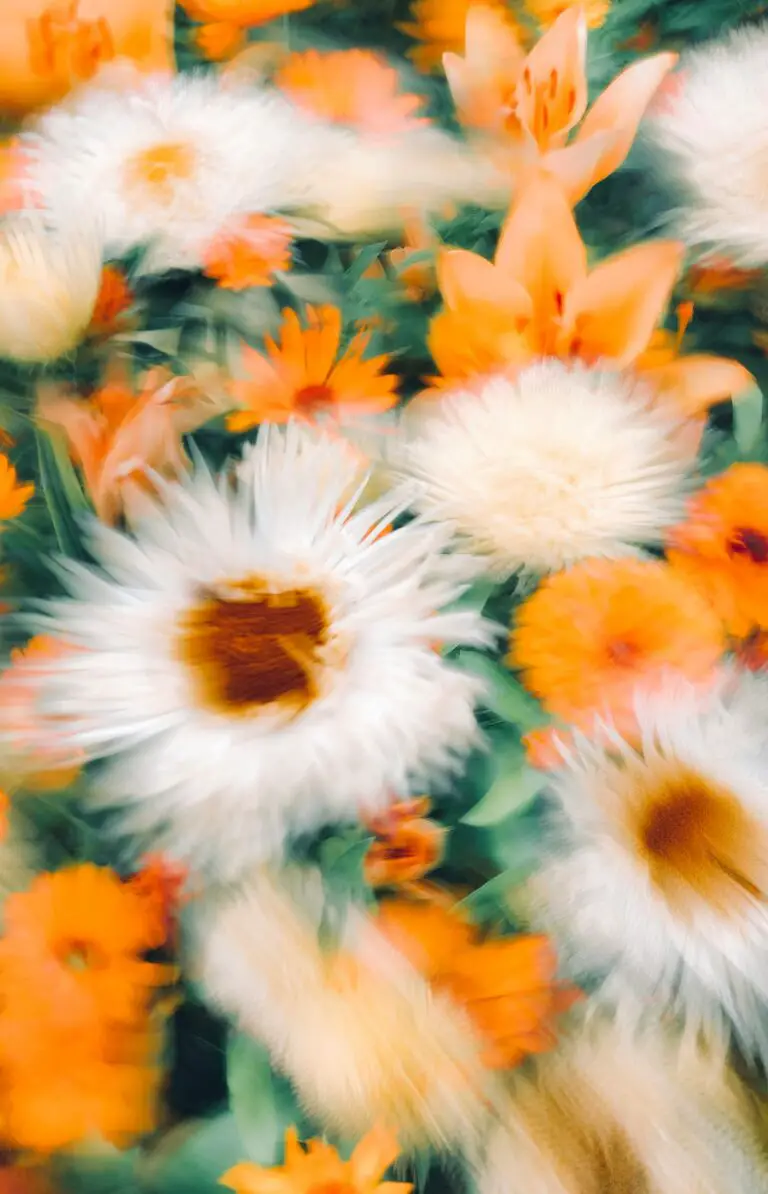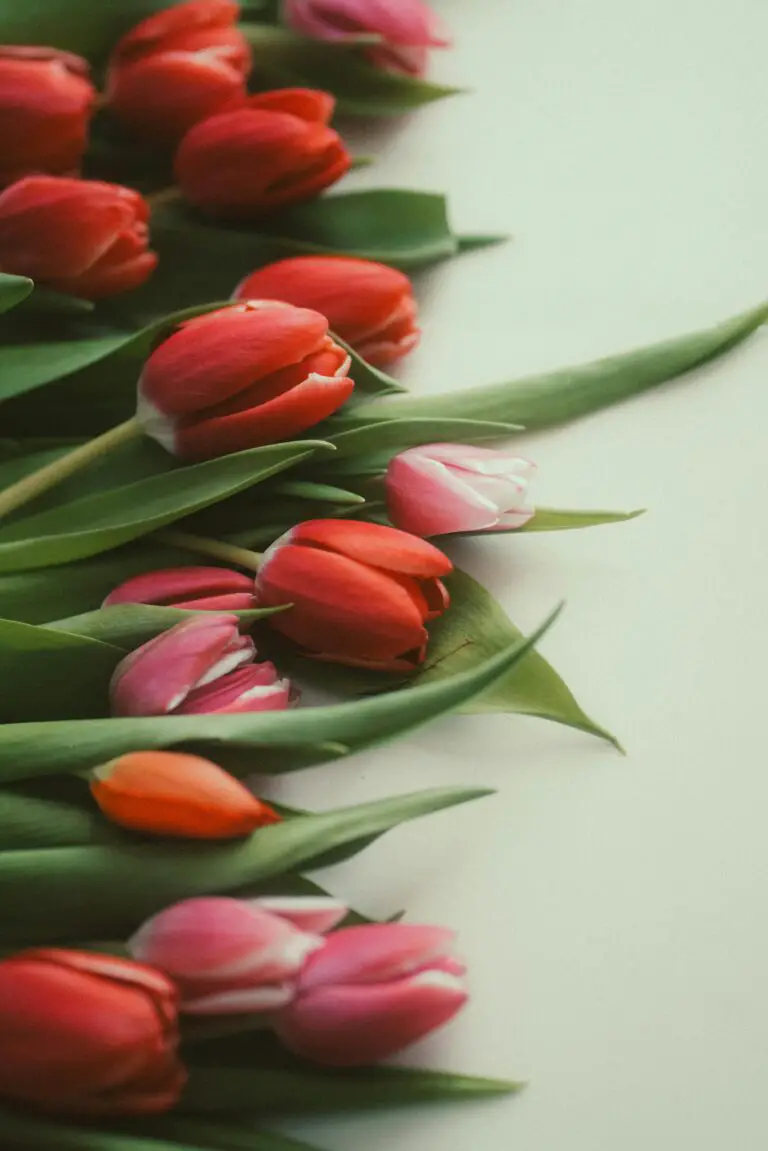Introduction to Deadheading Sedum
Ever glanced at your sedum’s once-vibrant blossoms, now withering away, and wondered if it’s time for a snip? That’s where deadheading sashays in. This isn’t the type of headbanging associated with heavy metal concerts but rather a gentle, nurturing practice that can make all the difference in your garden. Let’s decipher why giving your sedum a little trim might just be the floral equivalent of a rejuvenating spa retreat.
Deadheading is the horticultural art of removing old flowers from plants. Think of it as a careful edit to your garden’s living manuscript, where you’re enhancing the narrative of growth and vitality. Keeping your sedum well-groomed doesn’t just neaten up the place; it redirects energy from spent blooms back into the plant. This way, your sedums aren’t squandering resources on flower heads singing their swan songs. Instead, they channel their inner strength into denser foliage and preparations for a show-stopping performance in the next growing season.
Convinced but unsure where to start? Here’s a pro-tip: Grab your secateurs just as the flower heads begin to fade, right before they set seed. And if you’re keen to invite some wildlife into your garden, consider leaving a few faded blooms in place for the birds — they savor the autumn and winter buffet of seeds. For a visual guide, check out this insightful video:
Imagine each snip of your pruners as a promise of future growth. It’s a simple equation: less energy on past blooms equals more vigor for new buds. A little trim here, a little snip there, and voilà, you’re not just maintaining your sedum, you’re setting the stage for a floral encore that’ll have the neighbors peeking over the fence in admiration. Now that’s a blooming success story in the making!
Understanding Sedum and Its Blooming Cycle
Unlocking the secrets behind the thriving nature of sedum plants begins with a deep dive into their fascinating blooming cycle. Ever observed a patch of sedum erupting in a kaleidoscope of flowers even when neighboring plants seem to be taking a breather? It’s not just a stroke of luck; it’s the sedum’s unique growth rhythm at play!
Imagine sedum as the star performer in the garden play, taking center stage when many others take their final bow. Their propensity to burst into bloom in late summer to autumn provides a pollinator-friendly haven and a visual treat when much of the landscape is winding down. This inherent quality of sedums makes them invaluable in the plant community.
Now, when it comes to deadheading, the sedum’s individualistic blooming habits present an intriguing puzzle. Does snipping away spent blooms invigorate these hardy succulents, pushing them to refocus their energies? Or does it interfere with their natural cycle of adorning and recharging? The question of whether to deadhead sedum flowers hinges on understanding this cycle.
Take the ‘Autumn Joy’ sedum, for example, a well-loved variety whose flower heads shift from a charming pink to a rich, coppery hue as the season progresses. If left untouched, these blooms can provide structure and interest even in winter’s grasp, with frost outlining them in a silvery sheen—completely transforming the garden’s winter landscape.
But here’s a nifty reason why you might consider giving those shears a gentle workout: sometimes, deadheading can encourage a modest encore of blooms, ensuring that your garden continues to buzz with activity. For seasoned gardeners, timing is everything. It’s about reading the room—or rather, the garden—and making that snip when it aligns with your sedum’s performance.
If you’re seeking more insights on nurturing these resilient rock garden stars, you’ve come to the right place. But for now, let’s get back to deadheading and how it plays into the grande finale of sedum’s flowering act.
Benefits of Deadheading Sedum Flowers
When it comes to giving your garden an instant facelift, deadheading is one of those simple yet transformative practices every gardener should master. Take sedum flowers, for example. Deadheading these succulent beauties not only clears away spent blooms, making way for fresh growth, but it’s akin to sending an exclusive invite to the next blossoming party!
Imagine you’re strolling through a garden, admiring the vivacious blooms of sedum. They’re a sight to behold, but as some flowers wither away, they can leave behind a less-than-stellar visual. This is where deadheading swoops in to save the day. By trimming those tired, faded flowers, you’re telling your sedum, “Hey, let’s focus our energy on sprouting new, vibrant blooms,” and, voilà, your garden aesthetics leap to new heights!

But the perks of deadheading don’t end with beauty. Sedum, like many other flowering plants, has this incredible natural cycle that, when interrupted by deadheading, can lead to a second flush of flowers. It’s like getting an action replay of the dazzling display you love so much. And, while you’re enjoying the encore, you’re also keeping diseases at bay, as removing the old blooms reduces the risk of fungal infections and other nuisances that can hide within decaying plant matter.
Beyond the allure of continuous blooms and a disease-free garden, consider the energy – both yours and the plant’s. While your sedums are busy redirecting their efforts from seed production to blooming, they’re also conserving their strength. You’re saving time and effort since less maintenance will be needed once plants are in the habit of producing fewer unwanted seedlings. So, by deadheading, you’re essentially finetuning the garden’s efficiency. Eager for more insights on how to enhance your plant’s well-being? Take a peek at these clever gardening insights for a flourishing green space.
Deadheading sedum isn’t just about extending its blooming season; it’s a strategic move towards a more vibrant, healthier, and all-round happier garden. Every cut is an opportunity, every removed flower head a chance for something new and beautiful. So, grab those shears and give your sedum the green signal to bloom away!
How to Deadhead Sedum Plants Correctly
Imagine this: your sedum’s vivid blossoms are beginning to fade, and you’re wondering what’s next on the care agenda. Enter the art of deadheading – it’s not just a garden chore, it’s a rejuvenating spa treatment for your plants! Let’s unpack the nitty-gritty of why and how you should give your sedum flowers a neat little trim.
What is deadheading, you ask? Think of it as a strategic snip here and there to remove spent flowers. This little trick encourages your sedums to focus their energy on growth rather than seed production. The result? More lush foliage and the potential for additional blooming – it’s all about keeping the show going!

The process is simple, but like a masterful haircut, it requires care. Start by locating the faded blooms. Give ’em a look-over; they’ve done their part, and it’s time to let go. Using a pair of clean, sharp scissors or secateurs, cut just above a set of healthy leaves or, if you’re aiming for a size reduction, go back to just above a leaf node or branching point.
Why is this important? A precise cut minimizes harm and leaves your sedum looking neat and tidy. Your garden is a stage, and deadheading is your behind-the-scenes magic for an encore performance. Dive deeper into rejuvenating your sedums with a comprehensive care strategy that keeps them thriving.
The beauty is in the frequency – or lack thereof. You see, sedums aren’t high-maintenance divas; they prefer occasional thoughtful trims over constant meddling. It’s all about keeping an eye out and taking action when necessary, which varies depending on your sedum’s species and its individual blooming schedule.
In the end, don’t fret too much over perfection. Nature is beautifully imperfect, and your sedums will appreciate your efforts. So go on, grab those shears and give your sedum the tender love and care it deserves. Soon enough, it’ll reward you with a renewed burst of life – a vibrant reminder of summer’s lasting touch!
When Is the Right Time to Deadhead?
For any budding gardener trying to boost their sedum’s bloom potential, knowing when to deadhead is akin to nailing the timing for a perfect soufflé – it’s crucial for success. Let’s chat about the timely art of deadheading your sedum, that perennial favorite known for its hardiness and vibrant blossoms. Timing is everything, and for sedums, the plot thickens with the change of seasons.
Early to Mid-Summer: The Initial Pinch
As summer begins its sunny reign, your sedum plants are basking in the heat, gearing up for their big show. Ever heard of the ‘Chelsea Chop’? Gardeners in the know use this clever trick around late May and early June to encourage a bushier growth and delay blooming for a more spectacular late-summer display. Snipping off the top third of your sedum’s growth can seem daunting, but it’s a move that pays dividends.
Autumn: The Joy of Deadheading
As the name suggests, ‘Autumn Joy’ sedum and its cousins enter their peak in the fall. This is when those bright flower heads have done their job, attracting pollinators galore, and begin to fade. After the first flush of joyous color, use a sharp pair of shears and get to work: a gentle snip here and there can encourage a second smaller bloom, tidying up your garden and extending the season’s delights.
Catch the Visual Guide
It might seem like a balancing act, picking just the right moment to deadhead your sedum plants for that encore of blooms. If you’re a visual learner, or just craving some expert guidance, this video should hit the spot. It dives into the nuance of sedum care, including the Chelsea Chop and other priceless tips for your perennial pals.
Remember, deadheading should i deadhead sedum flowers is not just a one-and-done deal. It’s a seasonal symphony, with each movement requiring attention and finesse. By timing your trimming just right, you can help your sedums strut their stuff with an extra sprinkle of vibrancy right through autumn’s golden days. So keep those pruners at the ready and let the show go on!
Common Misconceptions About Deadheading Sedum
Think all your plants will benefit from a little haircut throughout the growing season? Hold those garden shears for a minute! The practice of deadheading, or removing spent flowers, is often seen as a universal good for all flowering plants, but when it comes to sedum, the story isn’t so clear-cut. It’s time to uproot some of the common myths and give you the real dirt on deadheading sedum flowers.
The notion that deadheading is always the fast-track to more blooms could lead you down the garden path. For many plants, removing spent flowers encourages a second wave of blossoms, but sedum is a different beast. This hardy perennial, with its tight clusters of tiny flowers, often doesn’t play by the same rules. In fact, deadheading sedum might make you miss out on some of its late-season charm, including the transformation of its star-shaped blooms into stunning winter seed heads.
And what about the claim that deadheading is necessary to keep plants healthy? This is where the thorny issue gets a bit more nuanced. While it’s true that removing dead or disealy growth can help prevent the spread of disease, sedum is not only tough but also relatively disease-resistant. Plus, if you’re too eager with the snips, you might be unwittingly depriving local wildlife of a feast. Sedum flowers are a magnet for pollinators, and those seed heads? They’re a buffet for birds during the harsher months.
Wielding your garden tools too early in the season is another myth that needs pruning. Some gardeners believe that deadheading as soon as blooms fade will guarantee a healthier plant. However, sedums’ peak flowering might surprise you with its end-of-season timing. Cutting back too soon could cheat you out of blooms entirely. It’s always best to understand the rhythm of your particular type of sedum before making any drastic decisions.
So, should you deadhead sedum flowers? Not so fast! It’s crucial to evaluate the specific needs of your sedum variety, local ecosystem, and personal aesthetic preferences. The truth is, sedums can thrive and enliven your garden with very little intervention. Let’s set the record straight: deadheading is a practice best applied with knowledge and restraint rather than as a blanket rule for all flora.
As we dispel these myths, let’s not lose sight of the beauty inherent in a garden that is both carefully tended and allowed its natural course. After all, gardening is as much an art as it is a science, and sometimes, the best thing we can do is step back and admire the breathtaking outcomes that occur without our interference.

Care Tips for Sedum After Deadheading
So, you’ve snipped off the spent blooms of your sedum, and you’re looking at this stubby stem, wondering what’s next? Fret not; I’ve got some after-care wizardry to keep your succulent sensation thriving! Deadheading, after all, is just the opening act. Now, let the true performance begin—with a little post-snip TLC, you’ll see your sedum flourish like it’s vying for the “Plant of the Year” award!
First thing’s first: watering. Sedums are like those cool, low-maintenance friends. They loathe wet feet, so be sure to let the soil dry out between waterings. Imagine you’re giving your sedum a little spa break—a serene desert retreat, not a tropical getaway. Test the soil with your finger; if it’s dry a couple of inches down, it’s time to quench your plant’s thirst. Just like you’d sip a refreshing iced tea, your sedum savors a good drink … but in moderation.
With feeding, it’s all about the “less is more” approach. A low-nitrogen fertilizer in the spring is like a gentle nudge rather than a full-on shove. It says, “Wake up, beauty, it’s time to grow,” without causing a lanky, awkward growth spurt. Just picture your sedum as a growing teen: You want to bolster their health without overdoing it, lest they end up with all limbs!
Now, let’s chat about monitoring. Keeping an eye out for potential issues post-deadheading is like being a botanical detective. Watch out for tell-tale signs like discolored leaves or a sudden lean in your plant’s posture—both can be clues that something’s amiss. Catching these signs early can be the difference between a minor setback and a plant CSI episode.
Embrace these tips, and you’ll have sedums that command envious looks from every plant lover in the neighborhood. Just remember, each snip not only neatens your garden but also paves the way for a future flush of flowers that’ll be the envy of the block. So, with the right care, your sedums won’t just live; they’ll positively thrive and showcase the effortless beauty that nature intended.

Alternatives to Deadheading
Let’s talk about keeping your sedum smiling without snipping off spent blooms. Deadheading, while beneficial, isn’t the only way to keep your sedum’s spirits and stems high. Embrace a laissez-faire approach and let nature take its course. Think of your sedum like a self-cleaning oven – it knows how to clear the clutter, naturally.
Consider the charm of seed heads after the party’s over; they stand tall, offering an architectural element to your winter garden. Birds are bound to buzz by, thanking you for the unintended feast. There’s an organic artistry to the way dried sedum seduces the snow, creating a textured tableau that mirrors the frosted over elegance of the colder months.
If you lean towards a more groomed garden, grab your shears for a light trim rather than a full-on deadhead session. Just like trimming split ends encourages healthy hair, a quick snip can refresh your sedum without stripping it of its post-bloom personality. You’re not aiming for perfection, just a tidy-up that tells your sedum you care.
To embody this approach, visit a friend’s garden. Notice those sedum soldiers with patinaed crowns? They weren’t deadheaded. Instead, they were left to revel in their natural state, and they’re rocking it. Bring that zen, unbothered attitude to your own green space, and watch how nature rewards your restraint.

So before you deadhead, debate the benefits of a hands-off habit. It’s more than mere laziness—it’s a strategy for sustainable beauty and biodiversity. Sedum seduces with its resilient charm, no deadheading required. Let your garden tell its tale, chapter by season, without interruption. In gardening, sometimes the best action is inaction, and sedum stands as a testament to that tranquil truth.
Frequently Asked Questions
Ever noticed how the beauty of sedum flowers can spark a smile on a dreary day? Well, you’re not alone! Many gardeners like you wonder about the ins and outs of sedum care, especially when it comes to deadheading. We’re here to dig into those curiosities and shed some light on this petal-packed topic!
What is Deadheading and Do Sedum Flowers Need It?
Let’s cut to the chase—deadheading is the snip-snip process of removing spent blooms from plants. Some folks swear by deadheading to encourage more blossoms, but sedums march to the beat of their own drum. These hardy plants can keep looking spectacular even without regular trims, though a little tidy-up can work wonders for certain varieties.

Can Deadheading Extend the Blooming Period?
Imagine a sedum that keeps its colorful show going longer than your favorite Netflix series. Well, deadheading might just be your ticket to extended blooming periods. While it’s not a silver bullet, removing spent flowers can sometimes nudge sedums to produce new waves of color.
What Happens If You Skip the Snips?
Think of it this way: skipping the deadheading is like leaving the decorations up after the party. Sedums will strut their stuff with or without deadheading, but if you want to avoid a messy aftermath, a little cleanup could be in order. Plus, some sedums can self-seed and turn your garden into a surprise plant party next season!
Deadheading Sedum Flowers: A How-To Guide
Don your gardening gloves, because we’re about to get hands-on. Deadheading sedums is like giving them a quick spa treatment—it should be gentle and precise. Snip just below the flower head, and voilà, you might just coax out some fresh blooms. Keep in mind that technique may vary slightly from one sedum species to another.
Is There a Perfect Time to Deadhead Sedums?
Timing is everything, right? Hit the garden when sedum flowers start to fade, but don’t rush—it’s not a race. You’re the maestro of this floral orchestra, and your cue to deadhead comes when the blooms show signs of exhaustion. That’s your moment to step in and help set the stage for an encore performance.
Are There Any Benefits to Leaving Old Blooms?
Believe it or not, there’s beauty in the old, faded flowers too. They bring a rustic charm to the winter garden, and birds love them! If you’re all about supporting your feathered friends and promoting a natural ambiance, then letting the old blooms stick around could be your jam. It’s your garden, your rules!
And there you have it, green thumbs—your pressing questions on deadheading sedum flowers, answered. Whether you decide to deadhead or not, just remember that every snip, or lack thereof, paints the unique picture of your garden masterpiece.



